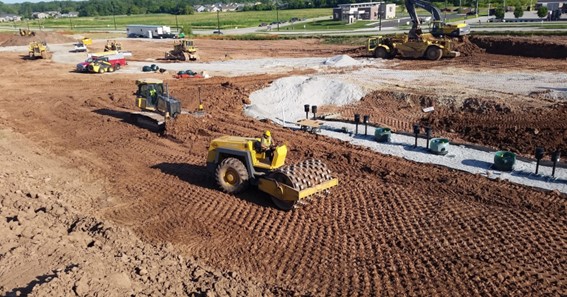Are you curious to know what is grading in construction? You have come to the right place as I am going to tell you everything about grading in construction in a very simple explanation. Without further discussion let’s begin to know what is grading in construction?
When it comes to construction projects, a crucial step in the process involves grading the land. Grading is the process of altering the elevation and slope of the land to create a level and stable foundation for construction. It plays a vital role in ensuring the safety, functionality, and longevity of any structure built on the site. In this blog, we will explore the significance of grading in construction, its various methods, and its impact on the success of building projects.
What Is Grading In Construction?
Grading is the process of manipulating the topography of a construction site to achieve the desired elevation and slope. This typically involves moving soil, rocks, and other materials to create a level surface that supports the structure and facilitates proper drainage. Grading is an essential preliminary step in construction, and its accuracy and efficiency lay the groundwork for a successful building project.
Methods Of Grading:
Several methods are used for grading in construction, depending on the characteristics of the site and the requirements of the project. Some common grading techniques include:
- Cut and Fill: Cut and fill grading involves removing excess soil from higher elevations (cut) and using it to fill lower areas (fill). This method is commonly used to level uneven terrain and create a stable foundation.
- Topsoil Stripping: Before grading begins, the top layer of vegetation and soil, known as topsoil, is often removed and stored for later use in landscaping or erosion control.
- Slope Grading: In slope grading, the land is reshaped to create a specific slope or gradient, which is crucial for managing water runoff and preventing erosion.
- Fine Grading: Fine grading is the final step, where the surface is smoothed and compacted to ensure an even and stable foundation for construction.
Importance Of Grading In Construction:
- Stability and Safety: Proper grading ensures a stable foundation for the structure, reducing the risk of settlement, shifting, or structural failure over time. It also prevents potential hazards, such as landslides or flooding, that can result from poor site drainage.
- Drainage Management: Effective grading helps direct water away from the building, preventing water accumulation and potential water damage.
- Soil Compaction: Proper compaction of the graded soil ensures that the foundation can support the weight of the structure and prevents settling.
- Site Preparation: Grading prepares the land for subsequent construction activities, such as building foundations, roads, and landscaping.
- Compliance with Regulations: Grading must comply with local building codes and regulations, which often require specific grading practices to ensure safety and environmental protection.
Conclusion:
Grading in construction is a fundamental step in shaping the foundation for any building project. Through careful manipulation of the land’s elevation and slope, grading ensures stability, proper drainage, and adherence to building codes and regulations. A well-executed grading process sets the stage for a successful construction project, providing a level and stable foundation upon which structures can thrive for years to come. As a critical aspect of the construction process, grading remains an essential part of any builder’s toolkit in shaping the future of our built environment.
Get Knowledge About Different Topics On Sizesworld
FAQ
What Does Grading Mean In Building?
Grading is the process of reshaping land at a construction site. This can include raising or lowering ground levels, adding or removing slopes or leveling the ground surface. In general, it has two main purposes: Creating proper drainage. Preparing land to bear weight.
What Is Grading Used For In Construction?
Grading in civil engineering and landscape architectural construction is the work of ensuring a level base, or one with a specified slope, for a construction work such as a foundation, the base course for a road or a railway, or landscape and garden improvements, or surface drainage.
What Do You Mean By Grading?
the act of classifying something on a scale by quality, rank, size, or progression, etc.
What Is Grading In Earthwork?
Grading is configuring the surface of the land by removing or adding earthen material to shape the land to best suit the project. It is accomplished with both large machines, such as bulldozers, pans, and dump trucks, and men wield- ing rakes and shovels.
I Have Covered All The Following Queries And Topics In The Above Article
What Is Grading In Construction
What Is Final Grading In Construction
What Is Rough Grading In Construction
What Is A Grading Plan In Construction
What Is Fine Grading In Construction
What Is Land Grading In Construction
What Is Grading In Construction 8.1?
What Is Grading In Construction For Kids
What Is B.M.P In Construction Grading
What Is The Meaning Of Grading In The Construction Context?
What Is The Purpose Of Grading In Construction
What Is Grading In Road Construction
What Is Grading In Construction Is It The Same As Shovel Ready
What Is Grading In Construction In Nc?
What Is First Grading In Construction Is It The Same As Shovel Ready
What Is Grading In Construction
What is grading in construction?
